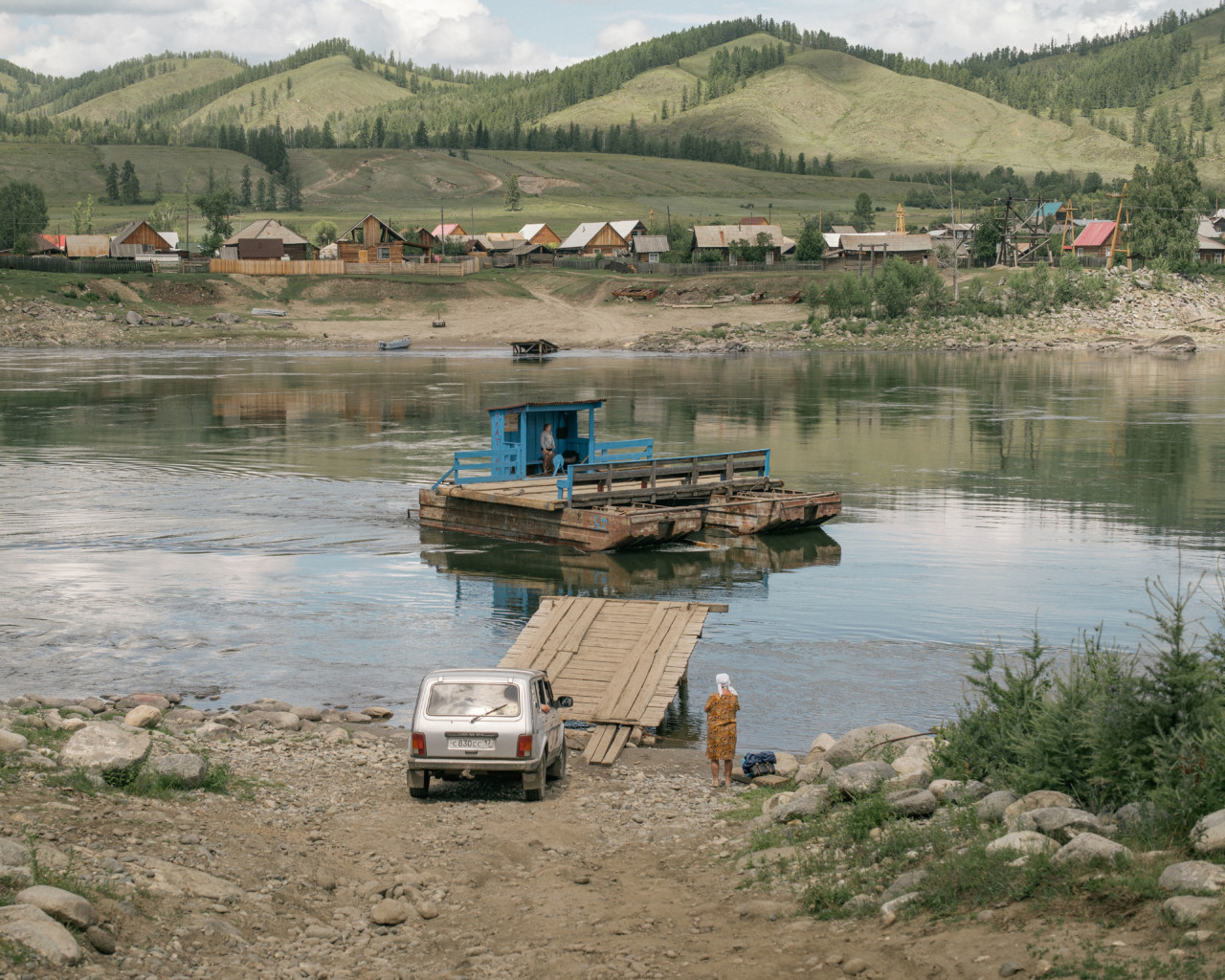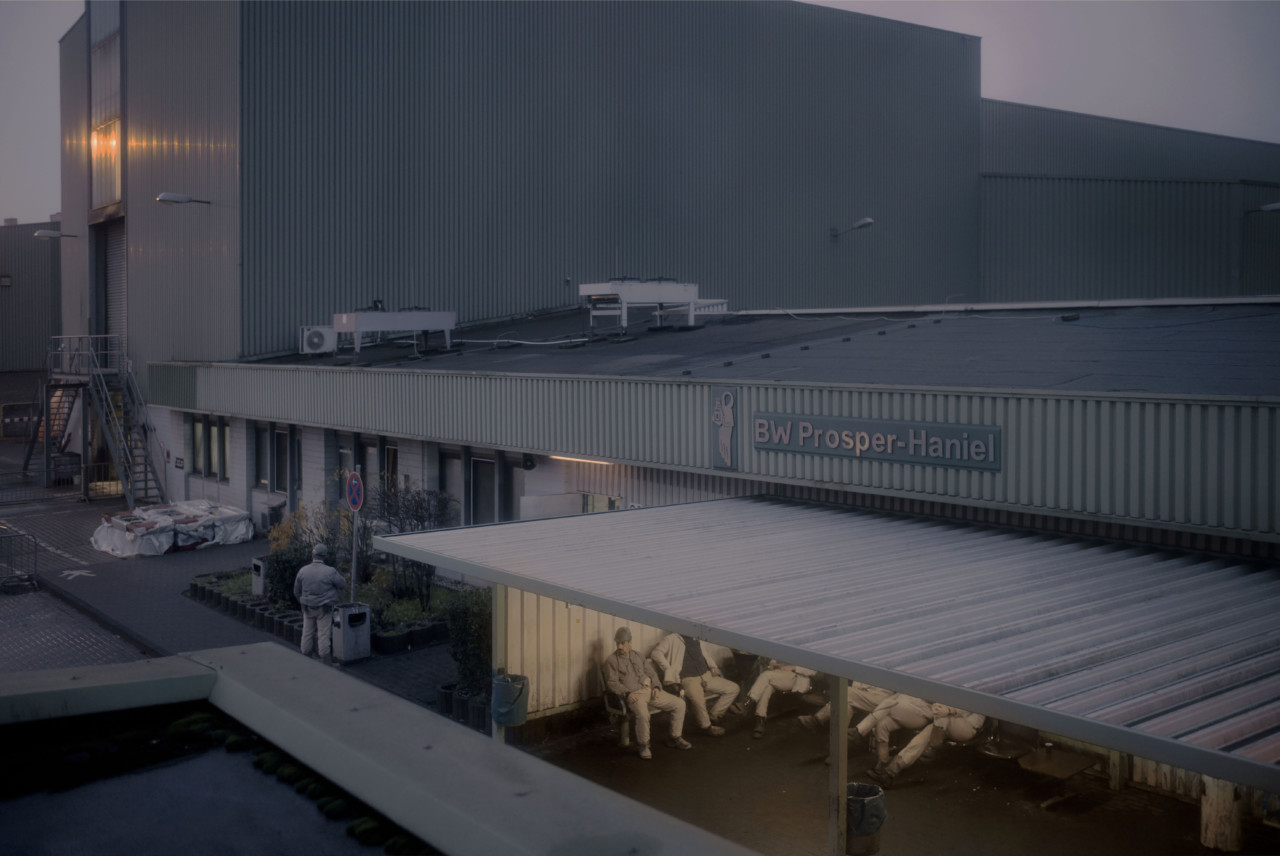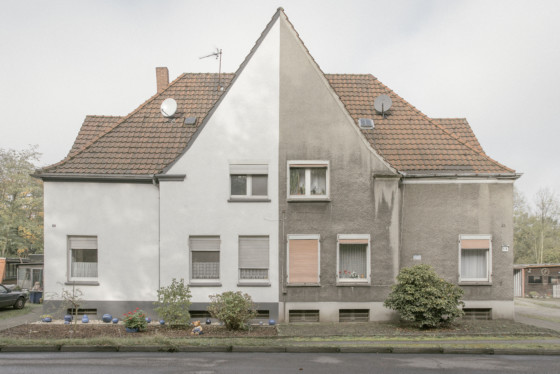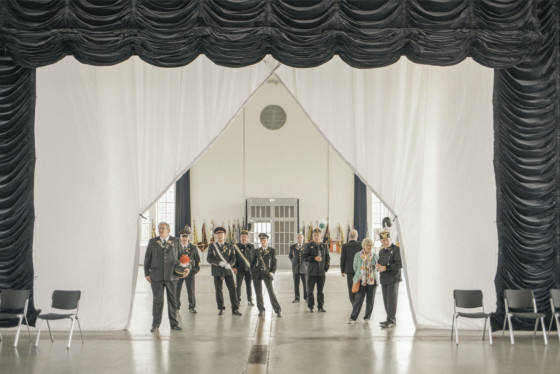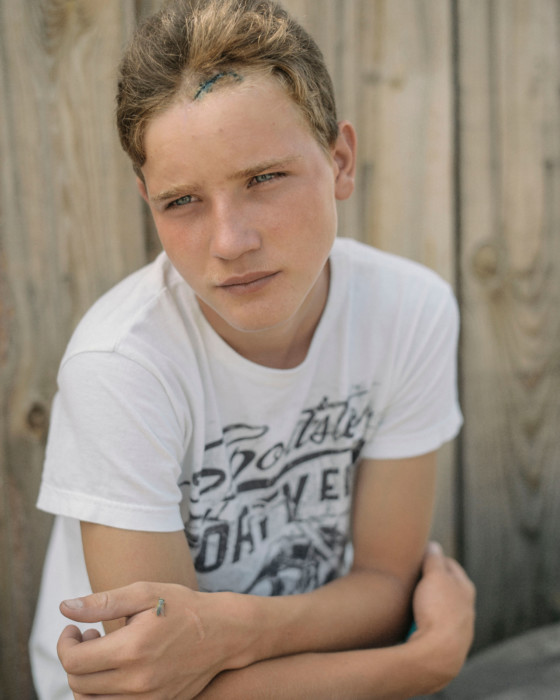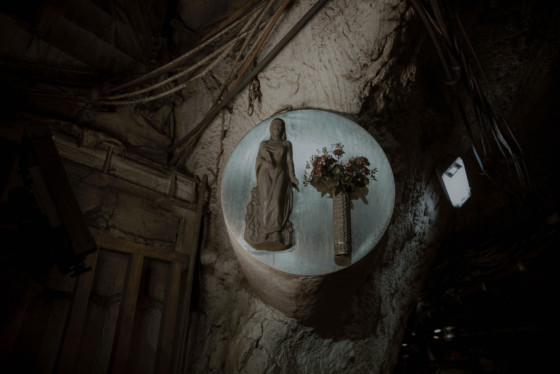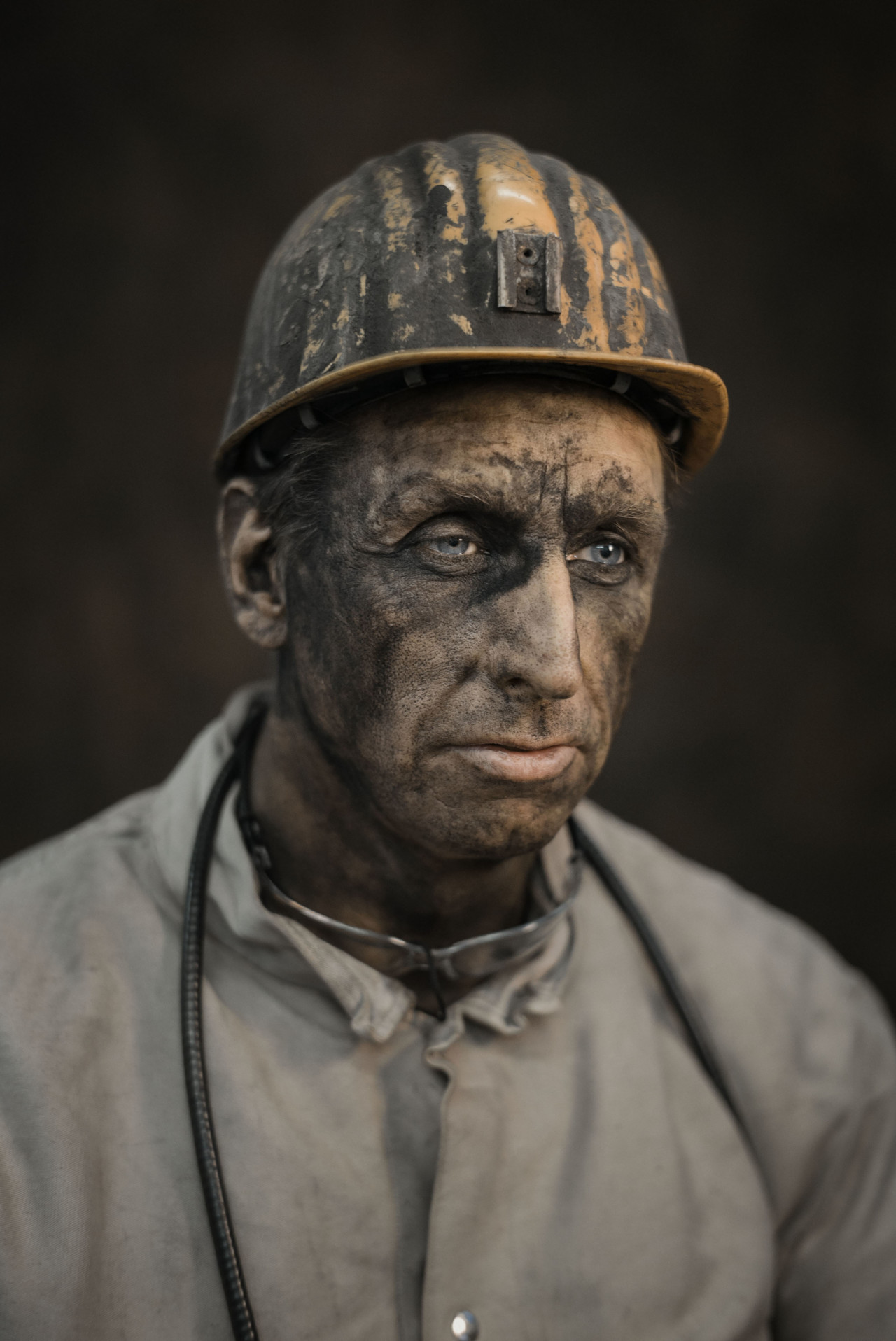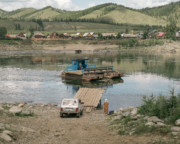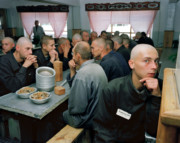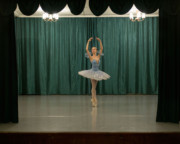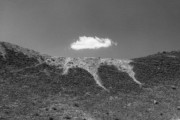Photographing Social and Geographical Isolation Between Siberia and the Ruhr
Nanna Heitmann, 2019 Magnum nominee, discusses reconnecting with her roots, and the way that one posed portrait changed her approach to making work
Nanna Heitmann, who is currently studying Photojournalism and Documentary photography at the University of Hannover, became a Magnum nominee at the collective’s 2019 AGM.
The two bodies of work she showed both deal with issues of isolation – physical, social and spiritual – as well as the very nature of how people react to and interact with their environs. Weg vom Fenster (‘Gone From the Window’), focused upon the inhabitants of Germany’s last operating coal mine, which has since closed. The work examined the camaraderie of the workers, facing an uncertain future, as well as those suffering physical disabilities after decades of work underground. Hiding From Baba Yaga – a project whose title is inspired by the witch of Slavic folklore – saw Heitmann journeying along Siberia’s Yenisei River, a place where “since time immemorial people have sought protection and freedom”, photographing those who seek isolation spurn the draw of Russia’s cities.
With two of your main projects to date you chose to photograph Germany and Russia. Did you intentionally pick locations, or themes, in the work that felt close to home?
Yes and no. The coal mining area in Western Germany is so different to where I grew up in Bavaria, which is surrounded by countryside and fresh air. I didn’t know that coal mining still existed in Germany and wanted to learn more. So, really this industrial environment was not so familiar to me.
I think what’s more important for me when I pick themes to work on, or places to work in, is that I’m able to speak the language. Except Moscow, where I spent the summers at my grandmothers place, I knew Russia from fairy tales, Soviet movies, and family anecdotes and wanted to explore my roots further. I spoke Russian until I was five years old and later found it hard to remember. The country is so huge and fascinating – speaking the language helps so much. Last year I studied on an exchange semester in Tomsk. That’s when I started working on the Baba Yaga project.
"I wanted to be a silent observer, working towards that idea of classic photo-reportage. The miners, on the other hand, always wanted to pose for me"
- Nanna Heitmann
The project before Baba Yaga, titled Weg vom Fenster (‘Gone From the Window’) is about the last coal mine in Germany. What interested you about the nature of coal mining?
There was a strong sense of fellowship between the workers I photographed, who had spent nearly all their lives in the mines. Some of the men I met had been working at the coal mines since they were 14. Those who had retired worked up until their 50s. It’s the nature of people there, their directness, their helpfulness, their humor; they are totally unpretentious.
How do you think that early project changed the way you photograph?
My approach to photography changed over the one and a half years of making Weg vom Fenster. At the start I wanted to be a silent observer, I was working towards that idea of classic photo-reportage. The miners, on the other hand, always wanted to pose for me. On one occasion, I remember a worker asked to have his photo taken and put his arm over his peer’s shoulder. In that moment, the way the miners presented themselves in this staged picture symbolised so much more than if I had just been observing them going about their routine. That one picture managed to capture what had fascinated me about this story. It made me more interested in portraits and the interaction between myself and the people I photograph.
Your subsequent project Hiding from Baba Yaga saw you on a journey following the Yenisei river, in Russia. What made you choose that river?
I think I wanted to do something more freeing. The mining project had involved a lot of challenges, from getting permission to access the mines, to working in those dark conditions. With my next project, I knew I wanted to explore many different themes and topics such as isolation, loneliness, revival of shamanism and so on. The river was a thread I could follow so I wouldn’t get lost, but could venture deeper into Siberia. The Yenisei is one of the longest rivers in the world. It stretches across many places in Russia which I wanted to visit: from Tuva, the Siberian republic which borders Mongolia, all the way up to the Arctic Circle.
"I can never warm up to Moscow. I feel more comfortable in smaller villages"
- Nanna Heitmann
You posted an archival picture of your grandmother in Siberia, taken decades before you travelled there. Can you tell me more about this, and how did it tie into the project?
My grandmother was an interpreter. That photo was taken in the 1960s when she assisted Richard Peter jun, a famous photographer from East Germany, on his travels around Siberia documenting the places where Lenin had been exiled. It was one of her favourite trips she made through her work.
After my grandmother passed away last March, I remembered the photobook he had left her and looked him up online. I discovered his archive had been digitised. There, I found pictures of my grandmother, including the one you mention. That’s when I realised that they went to some of the same places which I had travelled to last summer. I had unknowingly followed her on her journey. For instance, I took a photo of the Sayano-Shushenskaya Dam, which she had visited when it was still under construction. It was a complete surprise!
Is there one photo – from either of these projects – that stands out for you, in terms of holding some hidden context or meaning?
There is one photo in the Baba Yaga project that shows what seems at first like two men locked in an embrace. This was taken in the Tuva Republic and these two men are practicing khuresh, a style of wrestling native to the region. There is a split second before the fight kicks off where it looks like the opponents are hugging. This always struck me as a gentle moment, whenever I would watch the tournament in an arena.
One day, I was passing a training session and stopped to take photos. First, I asked if I might take their portraits, but they were too focused on their training and refused the offer. What came out of the interaction was this image.
Is there such a thing as a Siberian identity and how does it differ from the rest of Russia in your mind, having worked there?
I think there is. At one time, there was a movement to recognise the region as an independent United States of Siberia. On the whole, Siberians are very angry that their region is so poor, when actually it is one of the areas of Russia that is richest in resources. It provides gas, oil, and forestry, not only for Russia, but neighbouring China too. Local people see little of this money since the taxes go to Moscow, and they worry there will soon be no forests left. I think it’s a different mentality for sure, also because of the harsh climate. That said, I got really attached to the people in Siberia. I can never warm up to Moscow. I feel more comfortable in smaller villages.
"My main goal is to take somebody on a journey through a different Russia."
- Nanna Heitmann
In making Hiding From Baba Yaga, were you ever responding to the way Russia is seen around the world, especially in the wider media?
You always encounter the same stories about Russia in the media. It’s like people are only interested in Putin and children’s military camps. It was not my main intention to say what Russia is ‘really like’, because Russia is probably not like the photos in my project – which can sometimes be subjective and dreamy. My main goal is to take somebody on a journey through a different Russia, exploring places and stories that might not seem obvious to a non-Russian viewer.
Are there any photographers who you think have played a significant role in documenting Russia?
Sergey Prokudin-Gorsky’s large archive is an invaluable historical document. Working in the early 20th Century on assignment for Tsar Nicholas II, he produced the first colour photographs of Russia.
German photographer Hans-Jürgen Burkhard, who worked as a correspondent for Stern, painted a much darker picture of post-Soviet Russia, exploring gangsters, prisons, oligarchs, and rising nationalism — I find that work equally fascinating. Other photographers I would mention would be Lise Sarfati, Rob Hornstra, and Carl de Keyzer.
There are so many good Russian, contemporary photographers like Evgenia Arbugaeva or Danila Tkachenko. But there is perhaps no one photographer who shows me the Russia I know and recognize. The country is so huge. Every photographer shows me one aspect of this country.
Even when I wander through Moscow I experience a totally different city every day. One day it might be love, poetry; the next day it could be violence, capitalism, and poverty.
"What initially fascinated me about Siberia and present-day coal miners was how these people live and work under very difficult environmental conditions."
- Nanna Heitmann
Do you see any connections between Weg vom Fenster and Hiding from Baba Yaga?
I think both projects are about how people shape their environment or how the environment shapes them. And they both deal with isolation. I think what initially fascinated me about Siberia and present-day coal miners was how these people live and work under very difficult environmental conditions.
Both areas suffered from a structural change. The Ruhrpott area was the industrial heart of Germany, attracting millions of workers from all over Europe. In the 60s half million people worked in over 150 coal mines there. Today the unemployment rate is among one of the highest in Germany. With the fall of the Soviet Union the infrastructure collapsed in the remote regions of Russia, including many parts of Siberia. Isolation, unemployment, schools closing, a lack of medical care were some of the effects of the Perestroika.
In Siberia, many settlements and villages are on the resettlement list, which seeks to relocate people to milder climate zones. Some people have already moved away, but for many leaving is not an option. They either cannot afford to leave, or cannot imagine doing so. They are used to the harsh conditions. For the miners, darkness, sweat and the threat of danger have also produced decades-long friendships. I’m sure because of this, many of the miners wouldn’t want to swap their jobs for the world.
What’s next for you?
I want to continue documenting life along the Yenisei. I also want to move permanently to Moscow and pursue more projects there. I haven’t yet made up my mind about the other themes. The very scale of the country means there are so many stories besides what you see and read in the media. I want to venture deeper and explore the perception of Russia between fiction and reality.


